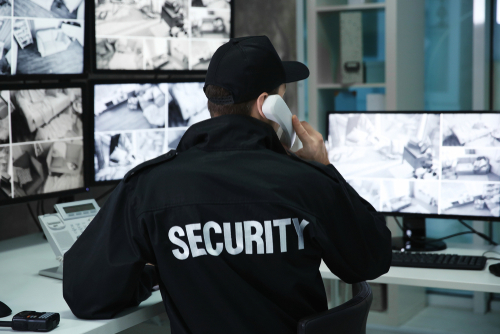Why Your Physical Security Strategy May Be Failing You
As facilities adapt their physical security strategies to fend off would-be thieves and vandals, are they making the best decisions to keep sites safe? With the implementation of new security elements such as cameras, fences, or alarm systems, facilities are continually upgrading their strategies.

However, even as facilities add defenses to their arsenal, these sites are still at risk from physical security threats. Fences can be easily bypassed, and unmonitored cameras and alarm systems often only catch thieves after the crime has been committed or not at all. Pro-Vigil’s recent State of Physical Security Entering 2025 report polled industry business leaders and found that while many are making changes to their physical security strategies, security incidents continue to impact their bottom line, with 91% reporting that physical security incidents increased or stayed the same in 2024.
Let’s explore several changes businesses made to physical security strategies in 2024, why they aren’t enough on their own to achieve a truly comprehensive security posture, and what can be done to achieve a more proactive approach to crime detection and deterrence.
Video Surveillance Cameras
According to Pro-Vigil’s survey, the No. 1 change businesses made to their physical security strategy each of the last five years was the installation of video cameras. For decades, video surveillance has remained an invaluable and necessary component of any security system.
If a picture is worth a thousand words, what is a clip of video worth? Cameras can record and store immense amounts of data, but that data is useless if not monitored and analyzed to recognize patterns like suspicious behavior. Video allows you to see and react to what’s happening in real time; you just have to be able to monitor, detect, and respond to the data it produces in real time.
Surveillance cameras, while an integral part of security, aren’t enough on their own. Without active monitoring or AI-enabled crime deterrence, video cameras often don’t do much good towards achieving a proactive security posture.
Fencing
A fence is a great first line of defense. But what happens if it is bypassed? A typical fence can be easily cut through or climbed over, and damaged fences are often left unrepaired for days or even weeks. Even electric fences can’t deter committed criminals, as they can go underneath the fence or cut through it with rubber gloves and bolt cutters.
The best security strategies take a layered approach. Instead of relying on a fence alone, fences should be used as a first line of defense to establish a perimeter with other defenses layered on top of it. This often means adding video surveillance in addition to fencing, hardening the perimeter against trespassers. However, further security steps may need to be implemented to ensure a truly secure facility.
Alarm Systems
For many facilities, alarm systems aren’t an option, especially for those without well-defined perimeters and multiple points of entry. The threat of triggering false alarms can also cause headaches for staff and lead to unexpected costs. Not to mention there’s no way to verify if an active threat is a false alarm.
According to one report, 90-99% of all calls received by police from alarm systems or panic alarms are false. The sheer quantity of false alarms can overwhelm officers and inhibit them from responding to actual emergencies. As a result of the proliferation of false alarms, police are stretched thin, which slows down response times and only increases the need for better security.
In place of typical finicky alarm systems, video surveillance can be paired with alarms, or replace them entirely, to provide remote video verification (RVV) when an incident occurs and filter out the false positives, saving everyone time and money. RVV leverages remote video monitoring to review footage and verify that an incident is not a false alarm. With visual confirmation, the appropriate action can be taken. This ensures that the correct response—whether deploying deterrents, calling the police, or ignoring a stray cat that tripped a motion sensor—can be taken before a crime occurs.
A Layered Approach to Physical Security
While video surveillance, fencing, and alarm systems are all key components in a comprehensive security posture, they need to be implemented together to be effective. The best approach to physical security is a proactive one. This includes implementing remote video monitoring systems to alert facilities of threats before they strike and layered security features so crime never becomes a problem for your facility.
Jeremy White is the founder of Pro-Vigil, a provider of AI-enabled remote video monitoring solutions.
The post Why Your Physical Security Strategy May Be Failing You appeared first on Facilities Management Advisor.

